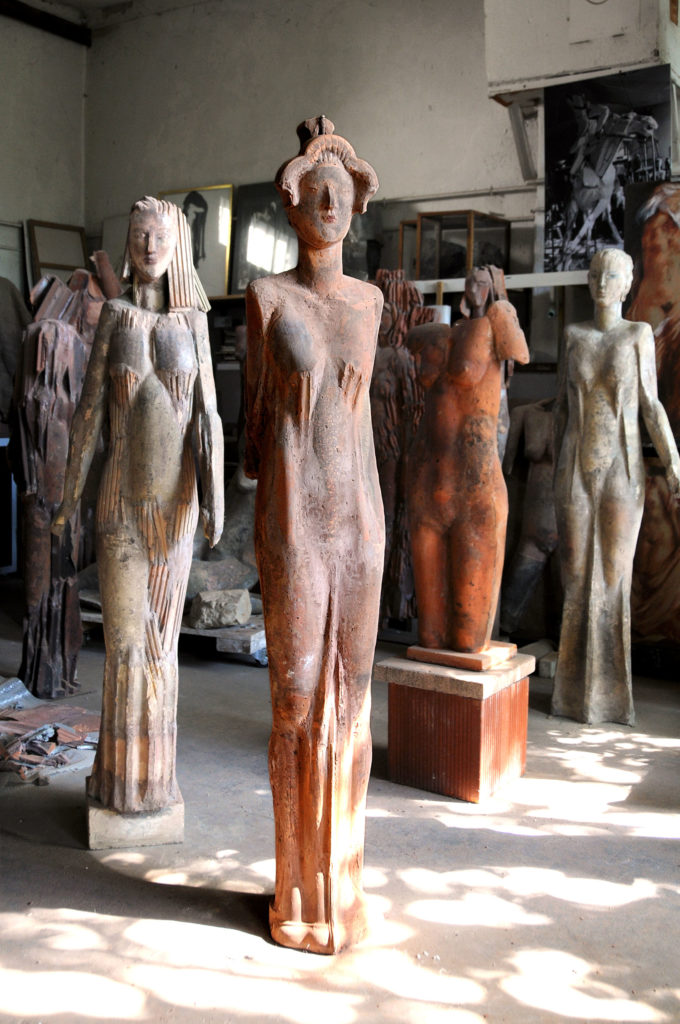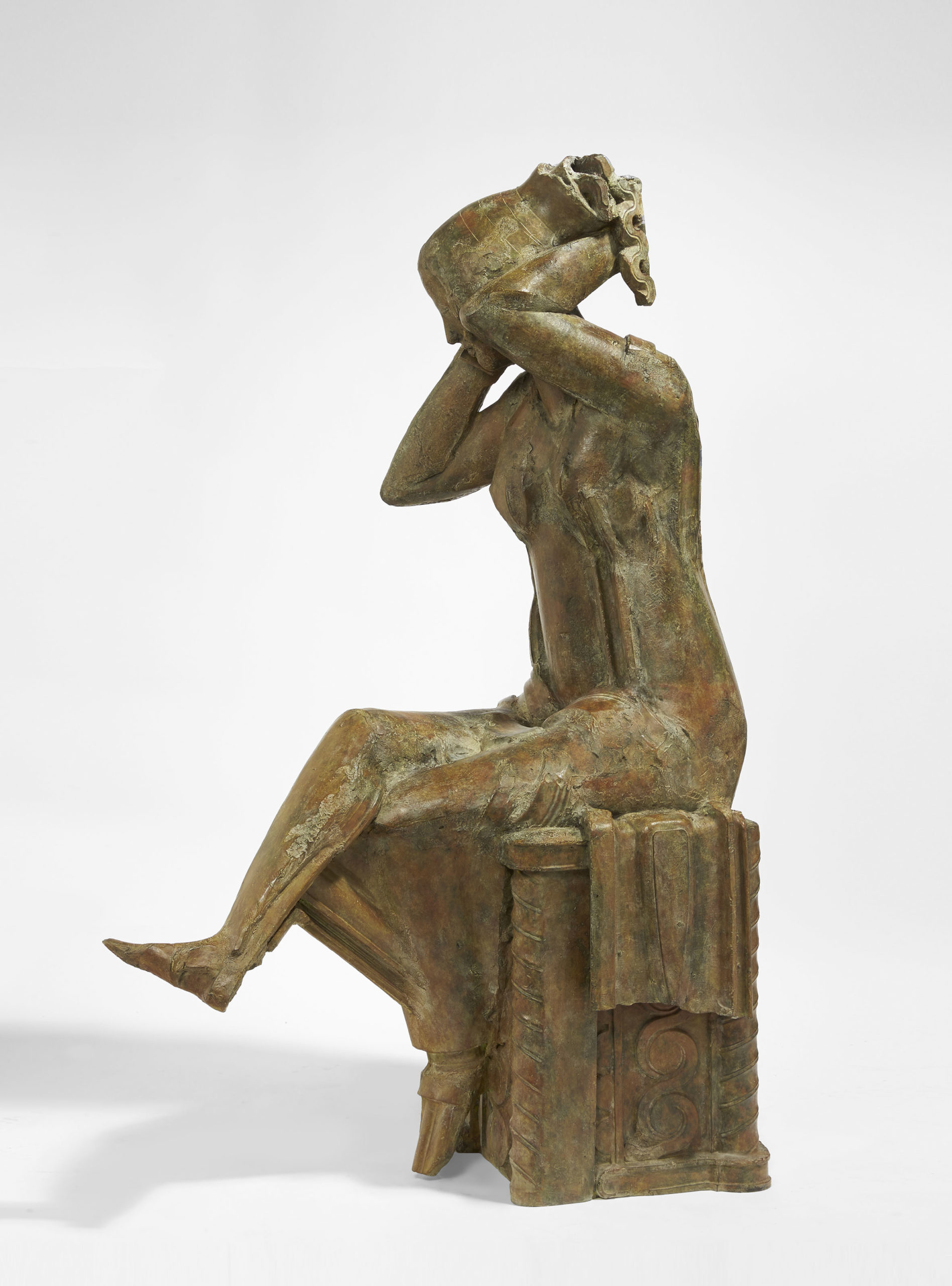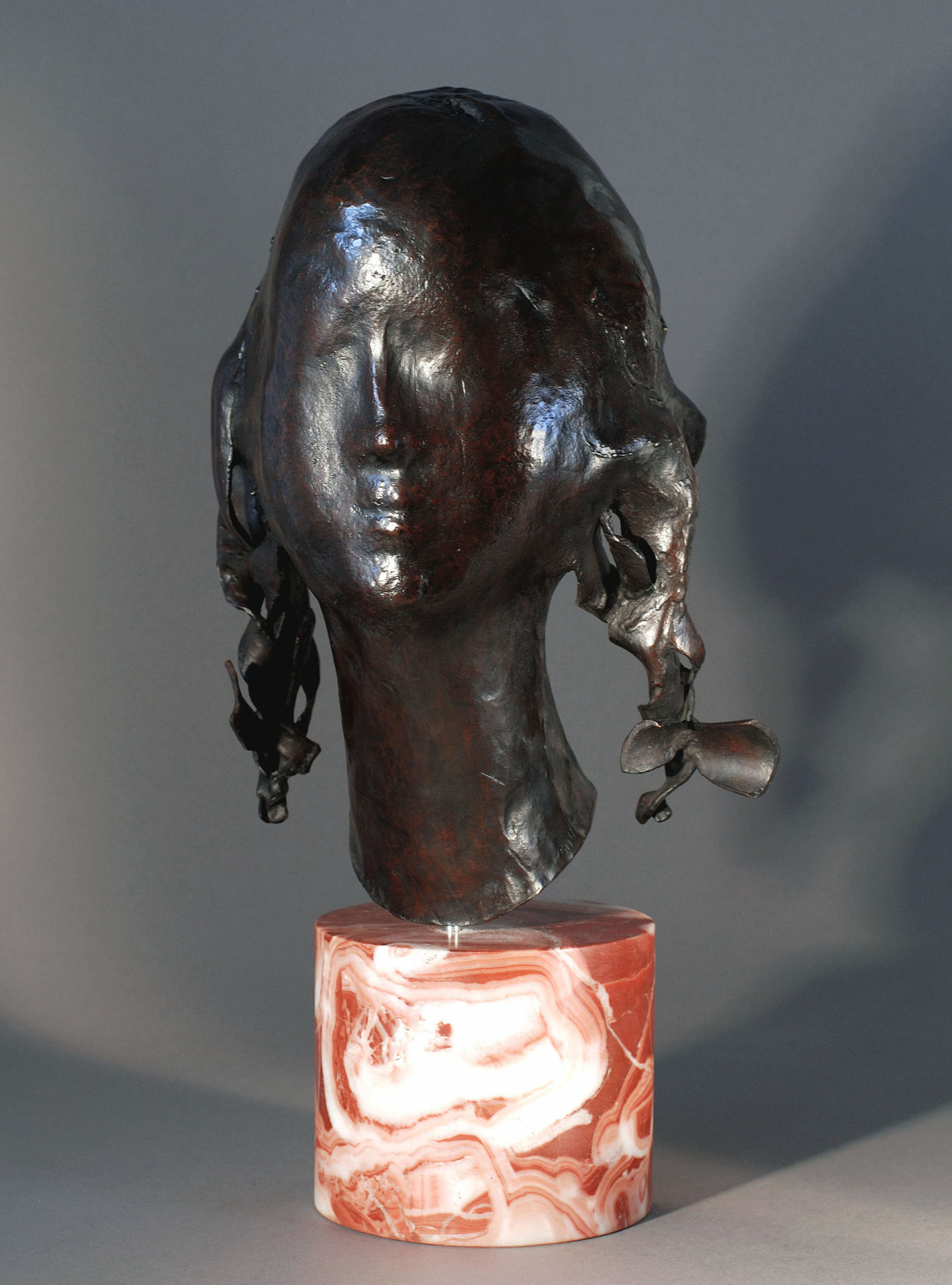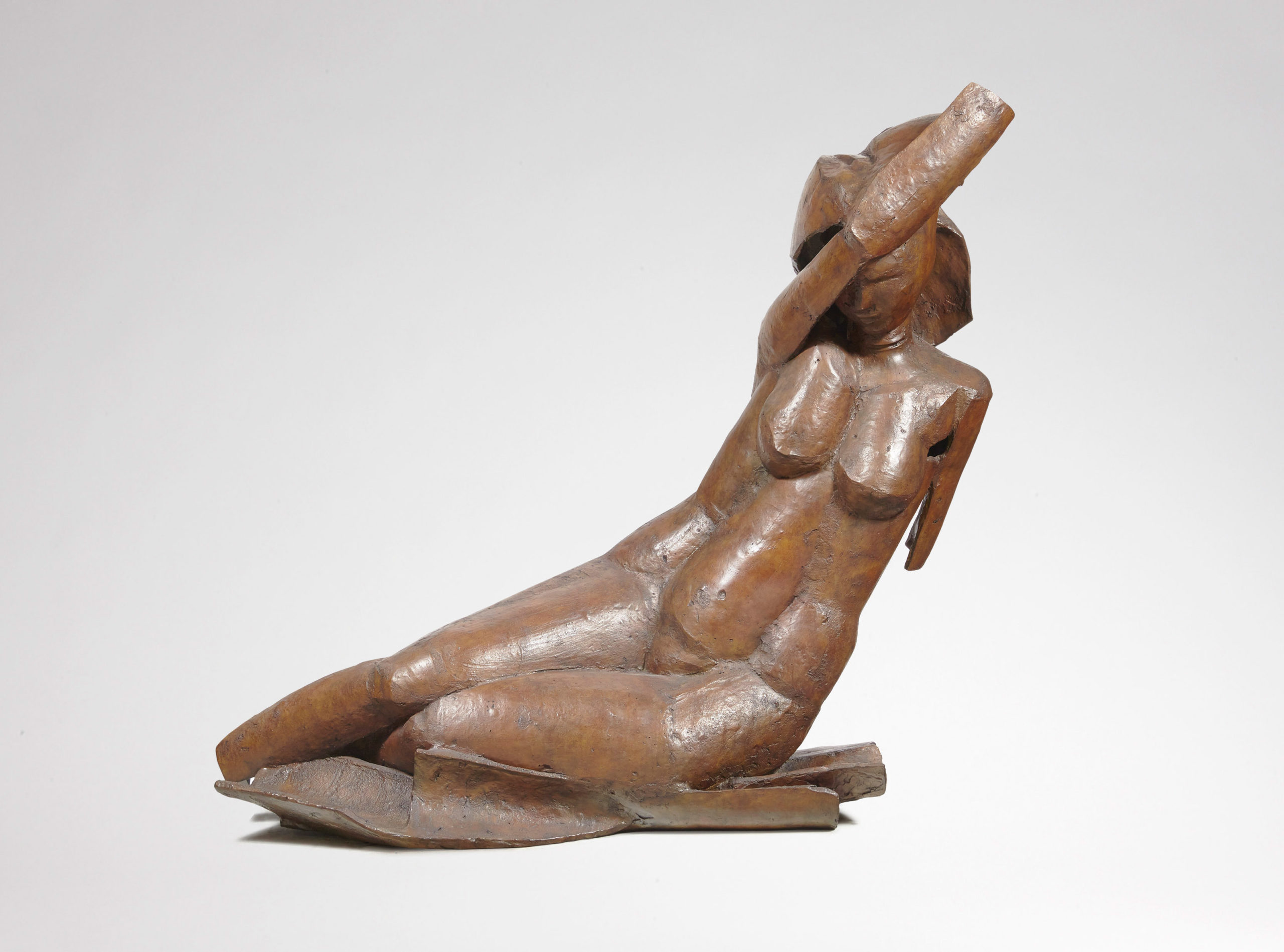
Born in Nancy in 1930, Claude Goutin’s work has left its mark on the public landscape by echoing the concerns of his time. After six years of training in the workshop of the famous Art Deco sculptor Alfred Janniot, the young artist won the First Grand Prix de Rome for sculpture in 1956, which allowed him to reside for three years at the prestigious Villa Medici and to immerse himself in the essence of the monumental. Indeed, like all great sculptors, contact with the masterpieces of ancient art, the Renaissance and the modern Italian period will leave a mark on his work. This voluntary allegiance, results first of all from the will of the artist to reveal his references or his sources.
After a final detour through the ancient world with a trip to Greece, Claude Goutin returned to Lorraine and settled permanently in Metz in 1960. In addition to his group exhibitions at the Rodin Museum in 1964 and 1966, at the Museum of Modern Art in 1965 and at the Grand Palais in 1969 and 1970, the artist received numerous commissions for public gardens, urban spaces and schools. He then proposed monumental works of a power that his master would not have denied.
Varying from figuration, as in L’effort physique et l’élan de la jeunesse (Physical effort and the impetus of youth) created in Nancy in 1962, to a certain geometric, almost abstract, formal vocabulary, these commissioned works also sometimes tend towards a true allegorical style. In a more personal register, the artist maintains the essence of the monumental. This is expressed on the one hand with his totems, his sculpted monolithic blocks, which seem to quote the mysterious menhirs of the Celtic world; and on the other hand, with his majestic figures of opera or goddesses, made from tiles and bricks. Used for the first time in order to save money, the tile has since become one of his favorite materials. This telluric material that Claude Goutin uses plays a fundamental role in his work. Indeed, at first glance one is seduced by the warm coloring of the clay, whether it is Roman tile or brick, broken or whole. These building elements are an integral part of our architectural landscape, having been used to build palaces, temples and walls.
The terracotta of the brickmaker brings the viewer’s unconscious back to the ancient world, which was the first to fully exploit it. The chipped pottery, the flat, Roman or fluted tiles, found here and there, are then patiently assembled with cement. Of different tone, the latter forms a kind of seam running through the body of the piece, further accentuating the effect of antique.
The work seems to come directly from an archaeological site, like an ancient pottery, broken and then skilfully reconstituted. The incompleteness of the bodies further emphasizes this filiation: the sculpture is seen in fragments, like a witness of a rediscovered civilization. The artist demonstrates that he has been able to establish a link between our time and past civilizations. Both archaizing and poetic, his works sublimate the space they occupy and are born of a dialogue between spirit and matter.
This apparent timelessness should not, however, hide the heritage of the moderns: far from any slavish imitation, this work evokes a form, rather than reproducing it. The artist does not work on a model but only from memory. Unquestionably feminine, the body is stylized: the breasts are conical, the thighs cylindrical and the neck columnar. However, unlike the cubist sculptors in particular, who initiated the simplification of forms, he manages to keep emotion and sensuality intact. Matter and creative spirit are linked in order to present the feelings.
A complete artist, like a Rodin, a Bourdelle or a Janniot, this sensitivity is also found in the other part of his work which is his pictorial work. As in his sculpture, Claude Goutin develops a plastic writing in which he privileges the human representation always in movement. He prolongs with great verve the intimist vein of some of his sculptures and accentuates the features of his characters to give primacy to the line.
From his graphic works, emanates an emotional quality that originates in the representation of bodies that seem to undulate and bathe in the play of light and shadow. Favoring a « frank » chromatic range, his vibrant touch offers us an immaterial, almost dreamlike universe, filled with characters suggesting human emotions. Created from memory, they also exploit the great themes of mythology and those of humanity (dreams, love). Made for themselves, without being part of a particular project, these drawings and paintings are considered by Claude Goutin as a means of expression in their own right.
Claude Goutin seeks above all to provoke a questioning, a reflection on the beings. The artist presents the extent of human feelings through different themes playing, depending on the case, on hieraticism or on movement. Claiming his freedom to create outside of any current, Claude Goutin defines the role of the artist in our society as follows: « To assert an independence and a difference in the face of the diktats of a formatted and manipulated society [while remaining] attentive to men, to their life and their condition. »







